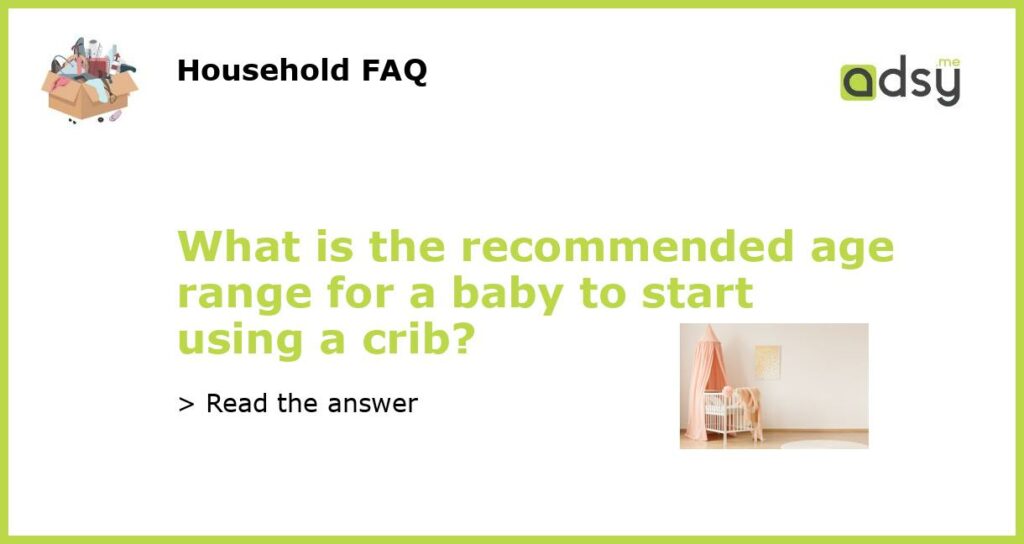What Age Should a Baby Start Sleeping in a Crib?
As parents, we all want our babies to have a comfortable and safe place to sleep. A crib is one of the most popular and safest places for babies to sleep, but at what age should a baby start using a crib? According to the American Academy of Pediatrics (AAP), babies should start sleeping in a crib or bassinet in the same room as their parents from birth until at least 6 months of age.
Why Is It Recommended to Start at Birth?
The reason for starting at birth is that newborn babies are vulnerable to sudden infant death syndrome (SIDS) or suffocation. The AAP recommends that parents should follow the ABCs of safe sleep: Alone, on their Backs, and in a Crib. This safe sleep practice can reduce the risk of SIDS by up to 50%. Thus, having your baby sleep in a crib from birth is highly recommended.
When Should You Transition to a Crib?
The AAP recommends that parents transition their babies to a crib or bassinet by six months of age. However, some parents may choose to keep their babies in a bassinet until three to four months of age because they are smaller and more snug than a crib. Regardless of when you transition your baby to a crib, it’s essential to follow safe sleep practices to reduce the risk of SIDS.
What Are Some Crib Safety Tips?
When it comes to placing your baby in a crib, there are several tips to keep in mind to ensure they sleep safely. Firstly, the crib should meet the safety standards set by the Consumer Product Safety Commission (CPSC). Secondly, ensure fitted sheets are the correct size and never leave loose bedding, stuffed animals, or pillows in the crib. Finally, position your baby so that their feet touch the end of the crib to reduce the risk of them slipping under the blankets.
In summary, a baby should start sleeping in a crib or bassinet from birth until at least six months of age. As parents, we need to ensure the crib meets safety standards and follow safe sleep practices. By following these guidelines, we can reduce the risk of SIDS and ensure our babies sleep safely and comfortably.






